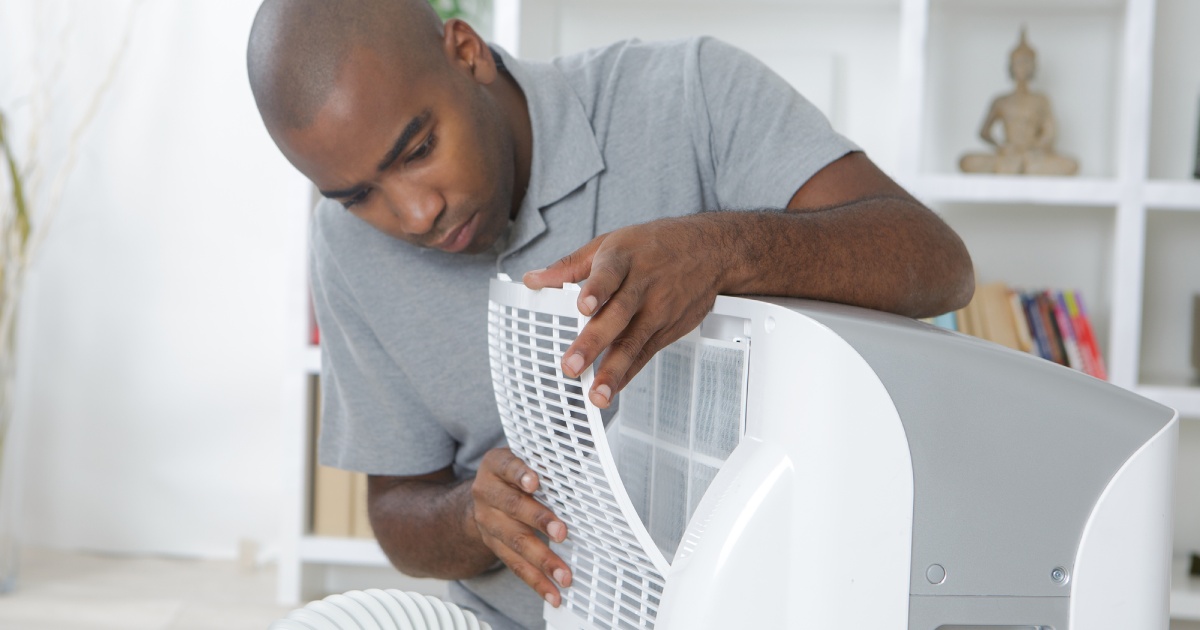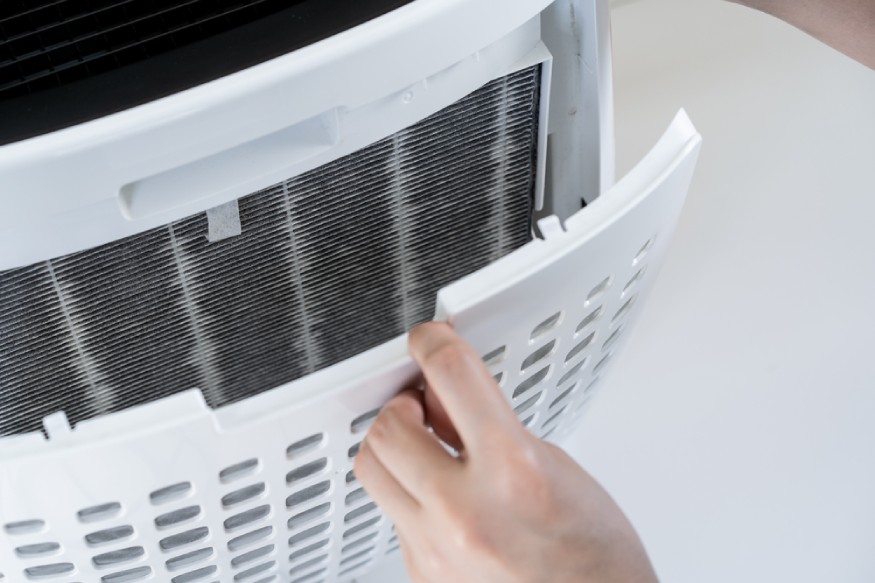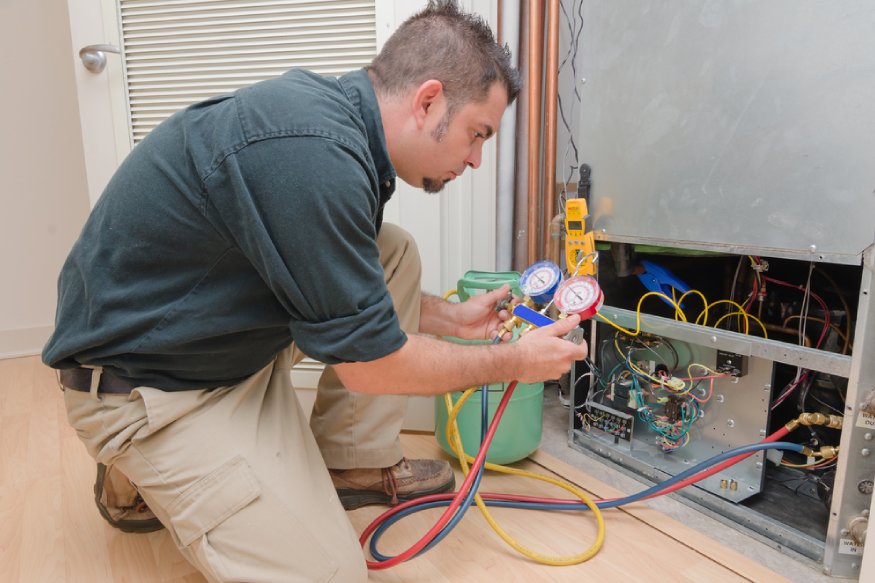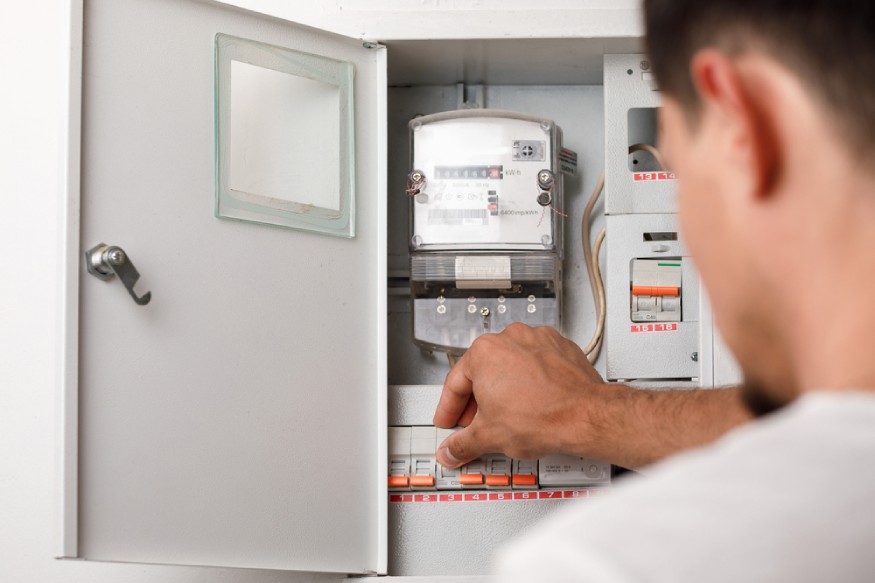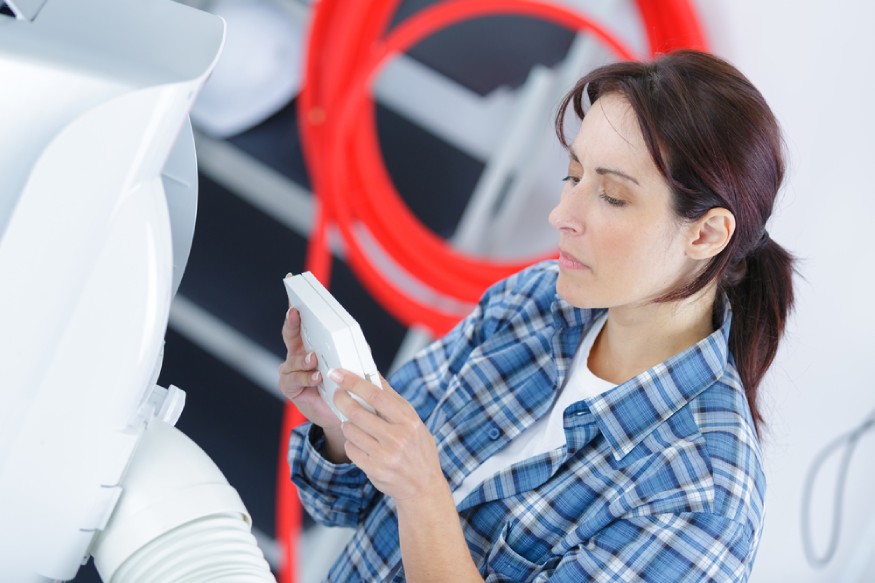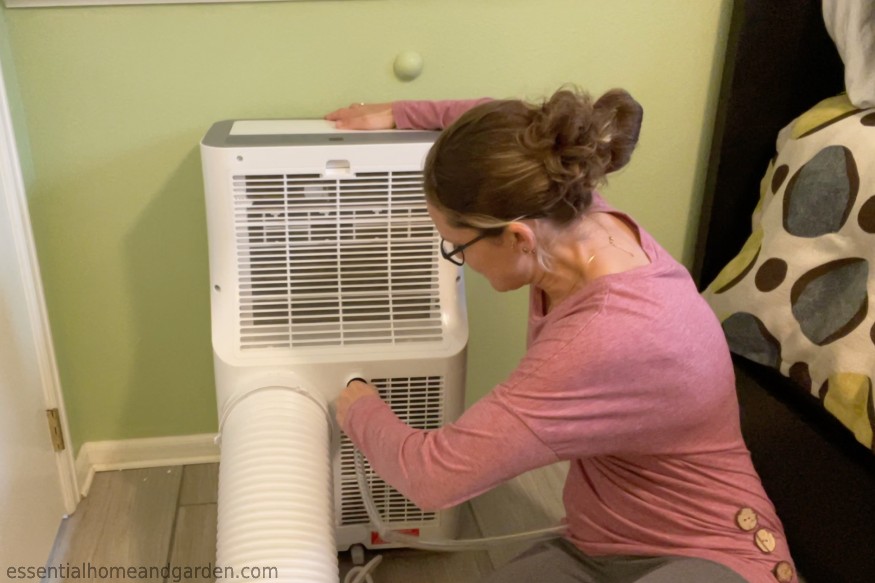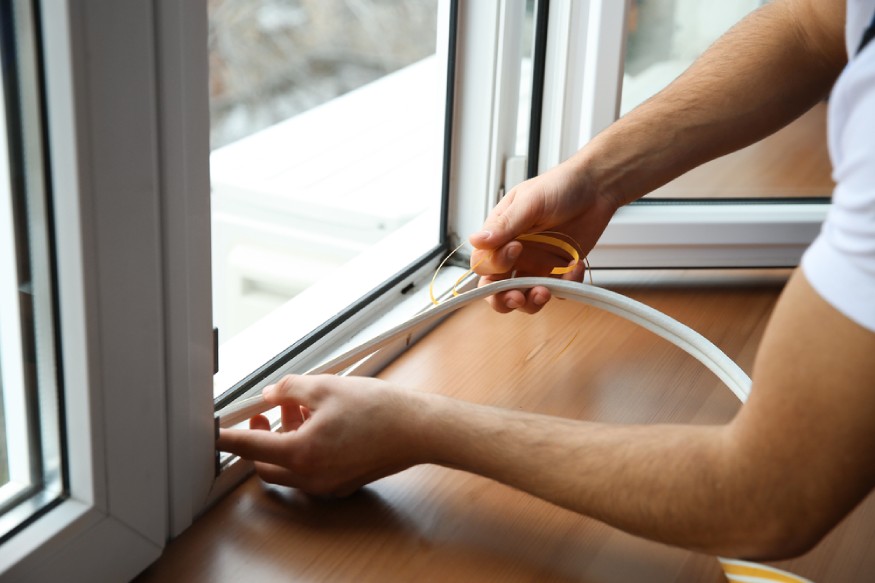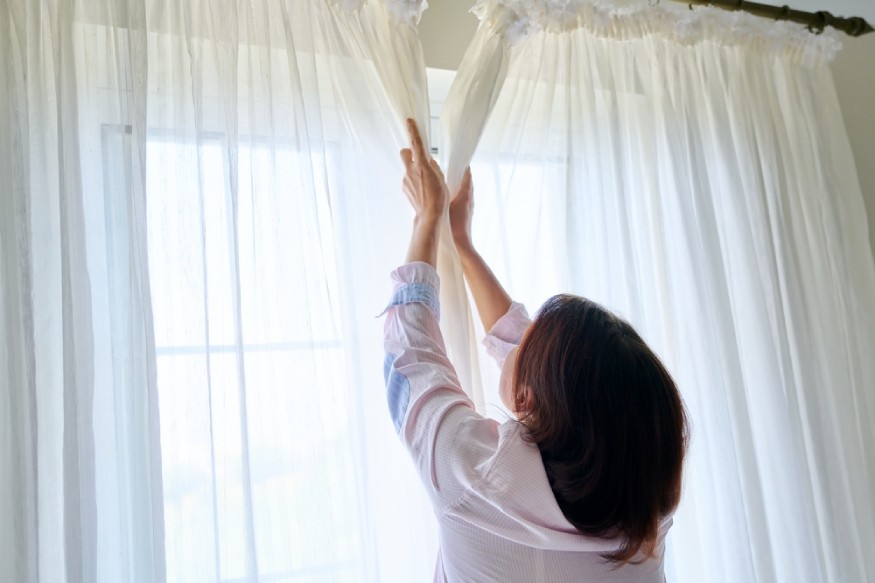If your portable air conditioner isn’t working properly, a few things could be causing the issue. In this article, we’ll go over some of the most common portable AC problems like a portable air conditioner not cooling, and how to fix them.
We’ve run into different portable AC problems you can think of, and we know exactly what you can do to get it right. This guide covers how to diagnose portable AC unit problems, what to do if it won’t turn on, and how to fix it from not cooling enough.
So, continue reading to learn more!
Diagnosing Portable Air Conditioner Problems
If your portable air conditioner is not working correctly, you can do a few things to troubleshoot the problem. Here are the steps you can take to troubleshoot your portable AC unit and what you can do to get it working again.
Check the Temperature
The first thing you want to do is to set the unit to the correct temperature.
If the portable air conditioner is not cool enough, it could be because the unit is not set to a low enough temperature. You can also check if the portable AC is in energy saver mode. If it is, the unit will run longer but not be as cold.
Also, if it doesn’t feel like your portable AC unit is cooling, check the temperature on the exhaust. You can feel it with your hand at first. If it doesn’t feel cold, it probably isn’t working (assuming your temperature set point is correct).
Or you can use an infrared thermometer (aka thermometer gun) to check the exhaust temperature. Just point and shoot at the exhaust. The temperature of the air blowing into your room should be 10 to 20ºF less than your set point.
For example, if your setpoint on the portable AC is 68ºF, it should be blowing out the air between 48-58ºF. If the temperature you measure is around 68ºF or hotter, you definitely have an issue.
Check the Airflow
A portable AC unit needs access to outside air to work properly. Ensure that all the vents and doors are open and clear. If the portable AC is on a windowsill or some other restricted area, move it to a different location and see if that helps.
Inspect the Filter
A dirty and clogged air filter can also cause portable air conditioner problems because it restricts airflow and prevents the unit from cooling your home properly. Cleaning or replacing the air filter can often fix portable air conditioner problems.
Refer to your portable AC manual for instructions on cleaning or replacing the air filter. Some portable AC units use disposable filters that you toss out and replace, while others use washable, reusable filters.
Look for Coolant Leaks
Another issue that can cause portable air conditioner problems is a refrigerant leak. If there is a leak, the coolant will escape, and the unit will not be able to generate enough cold air.
- Check all the hoses and connections to ensure they are tight and secure. If they are loose, tighten them up.
- Next, look for holes or cracks in the hoses. If you find any, you will need to replace the hoses.
- Finally, verify if the portable AC unit has any cracks or holes. If you find any damage, you will need to get a new portable AC unit.
You can check for refrigerant leaks with a portable leak detector.
Typically, refrigerant leaks in portable AC units are not economical to repair. Plus, if your refrigerant has already leaked out of your unit, you will not be able to refill it (unless you are an HVAC technician with the EPA certification to do so).
Note: If you suspect your portable AC unit has a refrigerant leak, put it outside or leave the area. Refrigerant can be toxic if you inhale or touch it.
Portable Air Conditioner Compressor Not Turning On
If your portable air conditioner is not cooling and the compressor is not turning on, you can check a few things. If you’re struggling to get your portable AC unit to turn on, you might have already tried some of these. But bear with us and double-check these things.
Check the Cable
Check the cable connections. Ensure that your portable AC unit is connected to a power supply. Double-check if the power button is switched on if you are using a power cord. Also, inspect the power cord for any damage.
Check Your Breaker Box
Check your breaker box if the portable AC unit is plugged in but not turning on.
Note: Sometimes portable air conditioners can trip the breaker when they are first turned on. This is especially true if the portable AC unit is too large, the room is too hot, or there are other electronics plugged into the same breaker.
So, if your portable air conditioner won’t turn on, go to your breaker box and reset any tripped breakers. If the breaker keeps tripping, make sure other electronics don’t run simultaneously on the same circuit.
Check Your Remote
Some portable air conditioner models come with remote control. If your portable AC unit has one, make sure it has batteries and is turned on. You should also check if anything is blocking the signal between the remote and the portable AC unit. Sometimes cabinets or other furniture can block the signal and prevent the portable AC unit from turning on.
Check for Ice Buildup
If your portable air conditioner is leaking water, it could be because ice has built up inside the unit. This can happen if the room temperature is very cold or the portable AC unit is not correctly vented.
To defrost a portable air conditioner, turn it off and unplug it. Then, remove any ice buildup with a hairdryer or set it to the “defrost” setting.
If your portable AC unit continues to freeze up, ensure it is adequately ventilated, and the filter is clear. Ensure the exhaust hose is not kinked and that there are no gaps in the seal between the portable AC unit and the window.
Try a portable AC unit with a built-in dehumidifier if you still can’t get rid of the ice buildup. This will help remove moisture from the air and prevent ice buildup.
Check the Thermostat
Ensure the portable AC unit is set to “cool” mode and that the temperature is lower than the current room temperature.
Also, check if the portable AC unit is in “fan-only” mode. The compressor will not turn on if it is, and the unit will not cool the air.
Finally, make sure the portable AC unit is not in “auto” mode. In auto mode, the portable AC unit will only turn on the compressor when needed. This can save energy, but it can also make the portable AC unit take longer to cool the room.
Determine If it is Overheated
If your portable air conditioner is not cooling and the compressor is running, it could be because the unit is overheated.
When a portable AC unit overheats, the compressor will turn off to prevent damage. The fan will continue to run but won’t cool the air. To fix an overheated portable AC unit, turn it off and unplug it.
Once the portable AC unit has cooled down, turn it back on and see if it works. If the unit is still overheating, ensure the room is well-ventilated and that the portable AC unit is not blocked by furniture or curtains.
Check the Filter
If your portable AC unit is not cooling properly, it could be because the filter is dirty. A dirty filter can block airflow and prevent the portable AC unit from cooling the room.
Turn off the portable AC unit and unplug it to clean the filter. Then, remove the filter and wash it with soap and water.
Let the filter dry completely before putting it back in the portable air conditioner.
Note that some portable AC filters are disposable, and you shouldn’t clean them but instead replace them. Check your owner’s manual for the correct filter size and part number.
Look for Lights
Most portable air conditioners have a power light and a mode light. The power light should be lit when the portable AC unit is plugged in.
Note: The mode light will be on when the portable AC unit is in cooling mode, fan-only mode, or auto mode. Both lights should be off if the portable AC unit is turned off.
If the power light is off, make sure the portable AC unit is plugged into a power outlet. If the portable AC unit is plugged in and the power light is still off, the portable AC unit may be defective, and you should contact customer service.
If the mode light is off, make sure the portable AC unit is in cooling mode. If the portable AC unit is in cooling mode and the mode light is still off, this could also show a defect.
Keep in mind that some brands make the lights flash if there’s a problem with the unit. For example, two short flashes and one long flash might mean the exhaust is blocked. However, these codes vary by brand, so check your owner’s manual to be sure.
Clear the Exhaust Hose
If your portable air conditioner is not cooling, it could be because the exhaust hose is blocked. The exhaust hose is the tube that goes from the portable AC unit to the window.
- Turn off the portable AC unit and unplug it to clear a blocked exhaust hose.
- Then, remove the exhaust hose from the portable AC unit and the window.
- Next, use a vacuum cleaner with a brush attachment to remove any debris from the exhaust hose.
- Once the hose is clean, reattach it to the portable AC unit and the window. Ensure the portable AC unit is properly vented before turning it back on.
Portable AC units are either “single-hose” or “dual hose.” Single hose units just have an exhaust to the outdoors and are better for smaller rooms. Dual hose units have an exhaust and an intake hose and are more efficient.
If you have a dual hose portable AC unit, you should clean both hoses.
Empty the Condensate Tank
Another reason your portable air conditioner might not be cooling is because the condensate tank or bucket is full. The condensate tank or bucket collects water that is removed from the air. The portable AC unit will stop cooling when the tank or bucket is full.
- Turn off the portable AC unit and unplug it to empty the tank or bucket.
- Then, remove the tank or bucket from the portable AC unit.
- Empty the water into a sink or bucket and return the tank or bucket to the portable AC unit.
- Turn on the portable AC unit and see if it works. If it doesn’t, you have another issue.
Not Blowing Cold Air or Blowing Hot Air
If your portable air conditioner is not blowing cold air, ensure the unit is in cooling mode. If it is in cooling mode and still not blowing cold air, check to see if the exhaust hose is blocked. If the hose is clogged, clear it as described above.
Another reason the portable AC unit might not be blowing cold air is because the coils are frozen. This can happen if the portable AC unit is overworked or if the room temperature is very low.
To thaw frozen coils:
- Turn off the portable AC unit and unplug it.
- Then, let it sit for a few hours.
- Once the coils have thawed, turn the portable AC unit back on and see if it works.
Note: It could also be because the portable AC is low on refrigerant. This is something you’ll need to have an HVAC professional take a look at, as it’s not something you can fix on your own. Usually, it isn’t fixable, or the repair cost is more than a new portable AC unit.
Portable AC Not Cooling Enough
If your portable AC unit is not cooling enough, the issues can range from it not being large enough to the technical problems listed above.
Here are some tips and tricks you can use to get an extra cooling boost from your AC unit.
Move Away From Direct Sunlight
If your portable AC unit is in direct sunlight, it won’t work as well. The sun will heat up the unit and make it harder to cool down the room.
To fix this, move the portable AC unit away from any windows or doors that get direct sunlight. If possible, put it in a shady spot. This will help the portable AC unit work more efficiently and cool the room down faster.
Give it Space
Another reason your portable AC unit might not be cooling the room enough is that it doesn’t have enough space around it. So, make sure there are at least a few inches of space on all sides of the portable AC unit. This will help the unit breathe and work more efficiently.
Close a Door
If your portable AC unit is trying to cool down a large area, it might not be able to keep up. In this case, it’s best to close off any extra rooms and only use the portable AC unit in the room you’re trying to cool. This will help the portable AC unit work more efficiently and keep the room cooler.
Seal Your Windows
If your portable AC unit is in a room with windows, make sure the windows are sealed. Otherwise, all the cold air will escape, and the portable AC unit will have to work harder to cool the room.
You can use weatherstripping or caulk to seal your windows. This will help keep the cold air in and make your portable AC unit more effective.
Draw Your Curtains and Shades
If your portable AC unit is in a room with windows, another way to help it work more efficiently is to close the curtains or shades. This will help keep the sun out and prevent the room from heating up. As a result, your portable AC unit won’t have to work as hard to cool the room, and it will be more effective.
Check Your Ceiling Fan
If your portable AC unit has a fan setting, use it in conjunction with the AC unit. The fan will help circulate the cold air and make the room feel cooler faster. Also, make sure the ceiling fan is on the right setting. In the summer, the ceiling fan should be set to spin counterclockwise. This will create a cooling breeze in the room.
In the winter, the ceiling fan should be set to spin clockwise. This will help circulate the warm air and make the room feel warmer faster.
Use a Dehumidifier
If your portable AC unit doesn’t have a dehumidifier (or if you live in a very humid area), you can use a standalone dehumidifier. This will help remove excess moisture from the air and make the room feel cooler. A dehumidifier will also help prevent mold and mildew from growing in your home.
Portable Air Conditioner Overheating
If your portable AC unit is overheating, it could be due to a variety of reasons:
- Dirty filters
- Blocked exhaust
- Not enough space around it
- Too much direct sunlight
- Low refrigerant
- Defects
- Running for too long
To fix these issues, reference our tips above. If your portable AC unit is still overheating, it’s best to call an HVAC contractor. They can help you troubleshoot the issue and find a solution.
Portable AC Issues Wrap Up
Portable air conditioners are a great way to keep your home cool and comfortable during the hot summer months. However, they can come with their fair share of problems.
The good news is that most portable AC issues can be fixed with a bit of troubleshooting. By following the tips and tricks above, you can correct any portable AC issue you’re having.
If you’re still having trouble, it’s best to call an HVAC technician. They can help you figure out what’s wrong and find a solution that works for you. Or, if you need a new portable AC unit, check out our top recommendation.
